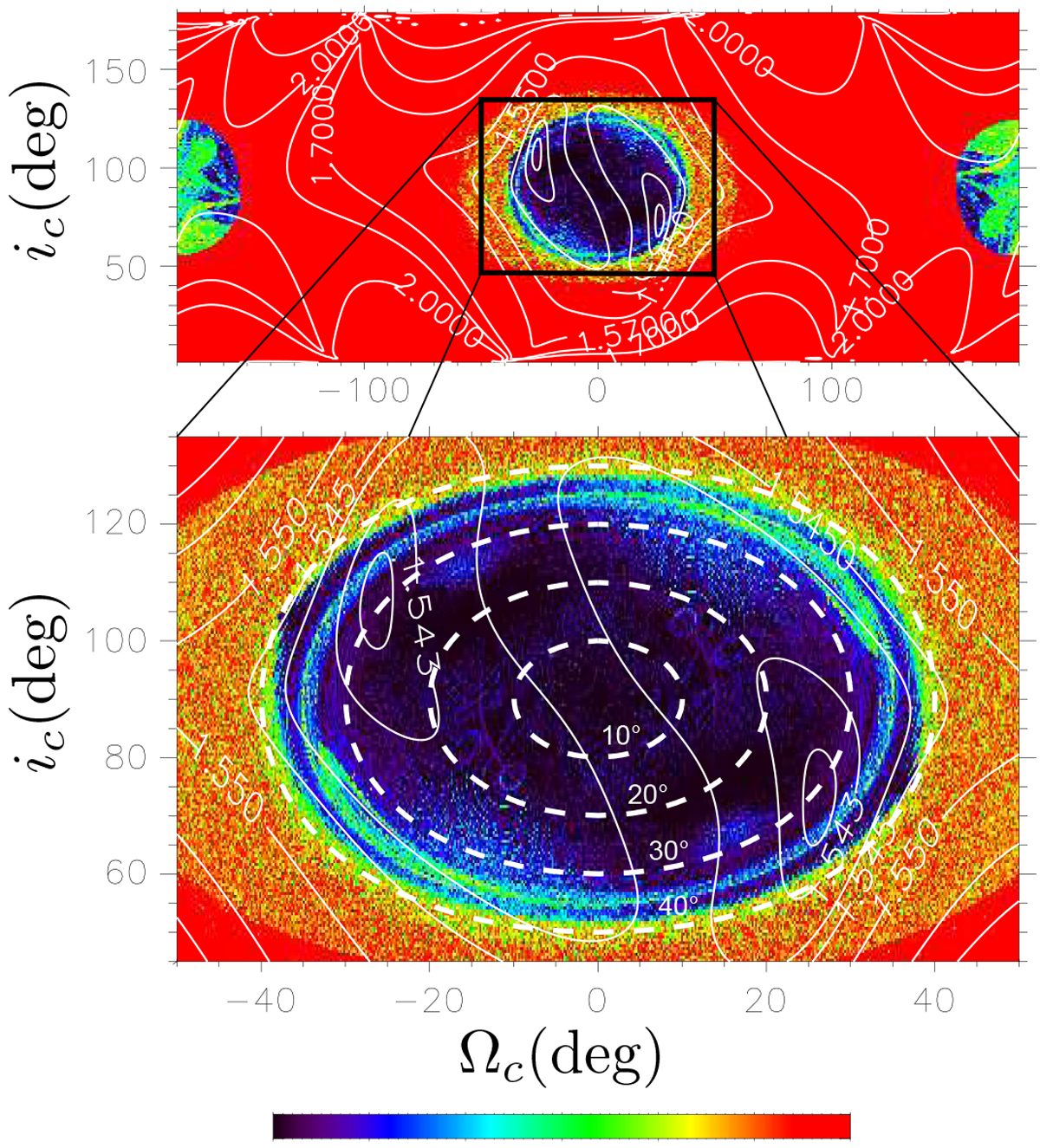Fig. 9

Global stability analysis of the WASP-148 planetary system. We fixed all orbital parameters of the solution shown in Table 6 and varied the only two unconstrained parameters, both from the outer planet WASP148c: the longitude of its ascending node, Ωc, and its inclination, ic. The upper panel shows the whole (ic, Ωc) domain, whereas the lower panel zooms ino the most stable regions. The step size was 0.2° in the node and 0.5° in the inclination. For each initial condition, the system was integrated over 50 kyr and a stability criterion was derived with the frequency analysis of the mean longitude. Because of the dynamical invariant, the figure is symmetric with respect to the (ic = 90°, Ωc = 0) center. White dashed curves give the isolines of constant mutual inclination I = 10°, 20°, 30°, and 40°. The color scale corresponds to values between − 9 (black) and − 3 (red) for the decimal logarithm of the stability index D used in Correia et al. (2010). The red zones correspond to highly unstable orbits, while the dark blue region can be assumed to be stable on a billion-year timescale. The reduced-χ2 level curves of the Newtonian fit are also plotted in white.
Current usage metrics show cumulative count of Article Views (full-text article views including HTML views, PDF and ePub downloads, according to the available data) and Abstracts Views on Vision4Press platform.
Data correspond to usage on the plateform after 2015. The current usage metrics is available 48-96 hours after online publication and is updated daily on week days.
Initial download of the metrics may take a while.


